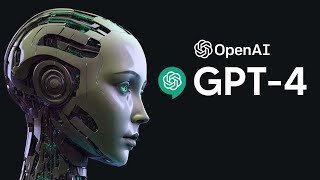Shifts In The Automotive Industry, Changes Are Not Coming, They Are Here
Connectivity is a term that is often used in the automotive industry these days. However, it was nearly two and a half decades ago in 1996 that it debuted with General Motors’ OnStar, the first in-car driver assistant. Now, nearly 23 years on, the automotive industry is witnessing one of the biggest shifts in recent history – brands are now identifying themselves as a connected mobility service provider and not just a vehicle manufacturer. This has come about with many advancements in technology enabling manufacturers to go even further with a connected vehicle, alternative fuels, autonomous technology and more.
Digital transformation is at the heart of these changes, from cloud computing to 5G internet speeds, has morphed many industries and rendered some obsolete. These technologies and many more have also affected the automotive industry whether in the ways that consumers research and interact with brands, or how cars are designed to harness these new technologies. Cadillac is no different with our ten-year plan technology is very much a main driver, from the vehicles we design, showrooms we build and services we offer.
All our future development work is propelled by our parent company General Motors’ vision of ‘zero crashes, zero emissions and zero congestion’. This is a lofty goal but one that is indeed achievable. Each year, nearly 1.25 million people worldwide lose their lives in traffic collisions, according to the World Health Organization. Countless more are injured, one of the technologies that will help in reducing this number is Super Cruise, our handsfree driving for the highway.
The connectivity that goes into technologies like Super Cruise go a step further where vehicles not only “talk” to one another but also the infrastructure for a smoother, safer journey for the occupants. For instance, an autonomous vehicle could communicate with the traffic lights and adjust its speed to ensure you never hit a red light – billions of dollars are lost because of congestion every year. Furthermore, connected cars would also be able to “warn” one another of inclement weather, or a collision, enhancing safety and efficiency further.
With the advancements of technology our customers and their preferences are changing, we can see that more consumers are opting for ride-sharing services and subscription models rather than the traditional model of automotive sales. For example, the subscription e-commerce market is booming and grew over a 100% a year over the past five years, clocking $2.6 billion in sales in 2016. This number will only continue to grow.
A way we have looked into servicing these consumers is with the launch of Book by Cadillac service in the US and now Europe. Those who sign up for the service can choose any Cadillac vehicle and drive it as much as they like without worrying about insurance or maintenance for a monthly subscription fee. Plus, they can change the vehicle whenever they want. This subscription service is only possible, thanks to the digital technology underpinning it, and is transforming the automotive industry at a remarkable pace.
The rapidly evolving motoring landscape can be attributed to the changing consumer preferences. it is imperative that manufacturers are prepared to adapt swiftly and be able to respond to market demands in an agile manner. While developing a new vehicle is an expensive and time-consuming proposition, with lifecycles of some vehicles passing five- or six-year mark, we are now catering to a generation that expects changes at a much greater speed, and I suspect this consumer behavior will only be amplified in the next few years.
With this in mind, we are working on a new battery electric vehicle platform called The BEV3, which will allow our engineers to shorten development time drastically. The platform can form the basis of a variety of body styles and drivetrain configurations. From a small front-wheel drive sedan to an all-wheel drive SUV, BEV3 can form the basis of a new model relatively quickly, increasing speed to market and enabling us to meet the requirements of the consumers much faster.
Unsurprisingly, these days, vehicle manufacturers need to spend the same amount of effort in the digital technology part of the development process as the mechanical aspect, if not more. Take GM’s Digital Vehicle Platform. It converges the two critical aspects of building a car for the future. The system can process 4.5 terabytes of data per hour, and can be updated over-the-air like a smartphone. So essentially, the vehicle could be continually upgraded with more advanced safety technology, connectivity features and autonomous driving abilities throughout its lifespan. This would in turn translate to greater safety of consumers, as well as enhanced convenience.
Software development is increasingly becoming more pertinent to the success of a vehicle; and is now comparable to the size of the vehicle, fuel consumption or the horsepower a car makes when it comes to purchasing decisions. Think of the software as the brain that controls every function of the automobile and its abilities can be upgraded at any time to enhance its performance. Just like a smartphone.
In short the industry is changing, no longer can a company look at how it can regain share or sales through the traditional sense only, but to look at how to adapt and offer consumers their product and services how and when they want.





